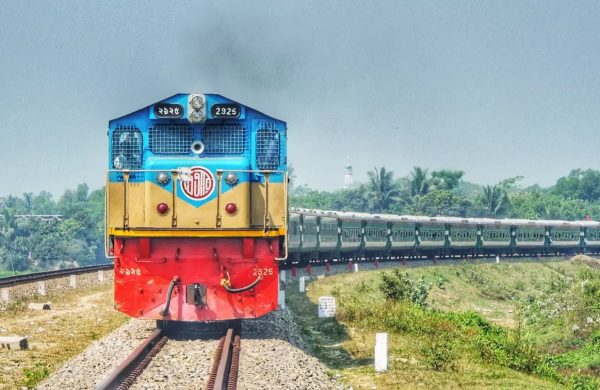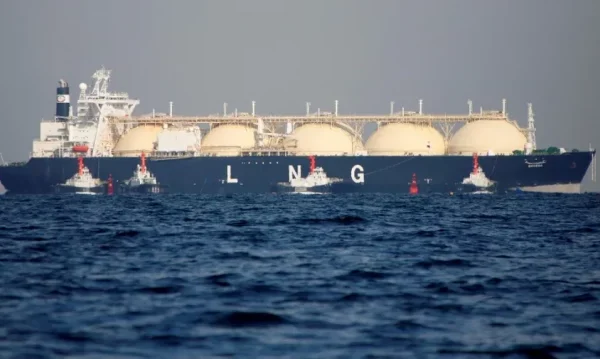Shipping cost in BD keeps upward trend as Red Sea Crisis lingers
- Update Time : Thursday, May 23, 2024

Staff Correspondent:
Shafiur Rahman, regional operations manager of G-Star in Bangladesh, needs to send 6,146 pieces of denim trousers weighing 4,404 kilogrammes from a Gazipur-based garment factory to Amsterdam of the Netherlands.
However, he can’t decide whether he will send them by air or sea since the cost has gone up on both routes. The indecision arises because air shipments will cost a lot of money for his company.
Although the transportation of goods through waterways will be relatively cheaper, it would require more time.
The bill is expected to total $17,616, or $4 per kg if the items are sent by air. The rate ranged between $1.50 and $1.6 per kg before the outbreak of the Red Sea Crisis.
The Red Sea connects Asia to Europe and the Mediterranean, via the Suez Canal. About 12 percent of global trade passes through the Red Sea, including 30 percent of global container traffic.
It emerged as the heart of global tension after Houthi rebels began attacking Israel-linked ships in response to the latter’s devastating war in the Gaza Strip in the third week of October.
The crisis deepened after the intensification of counterattacks on the rebel groups by the UK and the US.
Bangladeshi businesses are feeling the heat of the conflict as reinsurers worldwide are charging 3.5 times more premiums to cover the risks brought on by the crisis.
As a result, like Rahman’s company, other clothing retailers and brands have to count the additional costs due to the crisis, which has forced users to move goods through the alternative route.
The reliance on air shipments has increased significantly to carry goods from Asia to Europe as the alternative new route around Cape of Good Hope in South Africa costs more and involves more time.
The new route takes an additional 15 days compared with the normal shipping route using the Suez Canal because goods-laden vessels must travel 3,500 to 4,000 kilometres extra.
In fact, all countries that have trading relations with Europe are experiencing the same problem in carrying goods because of the Houthi attacks on commercial vessels.
Rahman said if he sends the same quantity of goods through the new sea route, he will have to pay $1,400, or $0.32 per kg. The rate was $0.17 per before the beginning of the Red Sea Crisis.
The higher shipment cost comes at a time when Bangladesh’s export sector has come under pressure owing to consumption slowdown in key markets and garment exporters are racing to manufacture products for the upcoming summer.
Faruque Hassan, the immediate past president of the Bangladesh Garment Manufacturers and Exporters Association, said the freight cost has increased by more than 30 percent.
In some cases, however, the rate is lower since some commercial vessels are still using the Suez Canal despite the risk of attacks.
In the case of Bangladesh, global clothing retailers and brands bear the shipping charge as suppliers send goods on the Freight-on-Board (FoB) basis. Very few suppliers ship goods under the Freight-on-Cost (FoC) method, which requires exporters to pay the shipping costs.
Some buyers had moved away from Bangladesh to other countries due to the protracted crisis. Now, those buyers are coming back, Hassan said.
Nurul Qayyum Khan, president of the Bangladesh Inland Container Depots Association, said the freight cost has escalated by more than the 30 percent reported by users.
He said the crisis has not only affected the traditional route but also raised petroleum prices, ultimately driving up the freight costs.
“Still, exporters are preferring the sea route to move cargoes because of the lower transportation cost compared to air shipments,” he said, adding that suppliers can’t make any profits if goods are to be transported by air.
Diverting vessels around the Cape of Good Hope has led to additional costs, with an increase of up to $1,000 per twenty-foot equivalent unit.
The extended transit times are notable, with an additional 14 days for northern Europe, 18 days for southern Europe, and a 30 percent rise in fuel consumption compared to the route through the Suez Canal, according to GEP, a global company providing AI-powered software, consulting and outsourcing solutions.
In addition, war risk premiums have surged to nearly 1 percent of a ship’s value, up from the previous 0.7 percent, it said citing global media outlets.
Moreover, the Suez Canal Authority has declared a 5-15 percent hike in transit fees for ships passing through the canal, effective from January 15, it said.



















